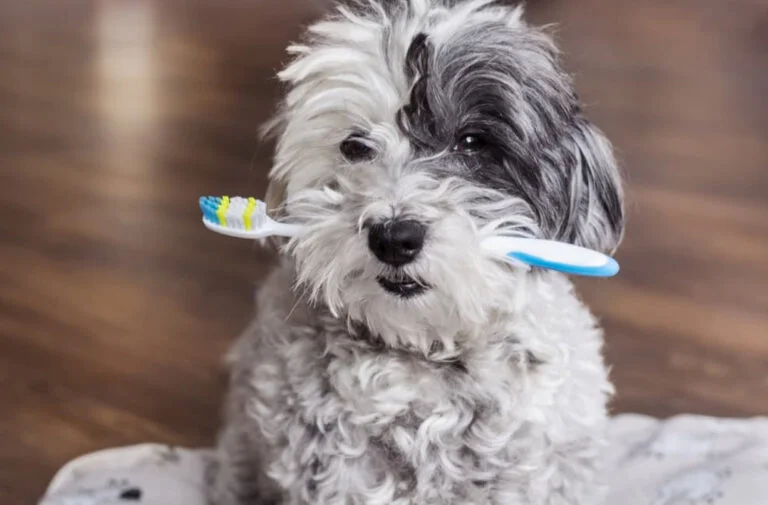For your dog to remain healthy overall, you must maintain its dental health. Like people, dogs need regular dental care, which includes cleaning their teeth. Good oral care can prevent dental decay, gum disease, and foul breath. But cleaning your dog’s teeth might be difficult if you don’t approach it carefully and patiently.
You can efficiently brush your dog’s teeth by following these ten steps.
1. Select the Appropriate Location and Time
Pick a moment when your dog is content and at ease. The ideal setting is a cozy, well-lit space with little noise. Remain away from noisy or busy areas, as they might divert your dog.
2. Locate the Appropriate Equipment
Obtain toothpaste and a toothbrush designed specifically for dogs. Dogs should not use human toothpaste. Dog toothpaste is safe to ingest, and toothbrushes for dogs are made to fit their particular mouth shapes and sizes.
3. Allow Your Dog to Taste Examine
Do let your dog sample the toothpaste. Put a tiny bit on your finger and let them lick it. This will help them become used to the taste and associate it with pleasant memories.
4. Place Your Hands There
Touching your dog’s teeth and mouth should be introduced gradually. Apply a little pressure to their gums and lips with your finger. As a reward, give them praise and treats to help them form a good association.
5. Give the Brush a Brief Introduction
Give your dog a toothbrush with some toothpaste and let him sample it. Next, gently brush a few front teeth. For the first few times, go in circles and keep it short.
6. Reconstruct Your Path
Proceed gradually to brush more teeth and concentrate on the rear of the mouth. Reward your dog’s cooperation by being patient and taking your time.
7. Take a Look at New Jobs
Try out a variety of positions to see which is most comfortable for you and your dog. Certain dogs might feel better seated, lying down, or under little supervision. Pick a position that will make it simple for you to reach their mouth.
8. Take a Break for Your Dog
Stop and give your dog a rest if it starts to exhibit signs of stress or discomfort. It is crucial to avoid pressuring the procedure, as this might lead to a bad association with cleaning your teeth.
9. Get plenty of practice, lots and plenty of practice
The secret is consistency. To create a regimen, try to brush for a little period each day. Your dog will get used to the procedure more quickly as you practice it.
10. End with an Award
Whether it’s a treat, some praise, or some playing, always reward your child after brushing. To promote future collaboration, emphasize the favorable experience.
Routine dental care, including brushing, is crucial for your dog’s health and lifespan. If you have trouble cleaning your pet’s teeth, speak with your veterinarian for advice and further suggestions on making the process go as smoothly and happily as possible for both of you.


